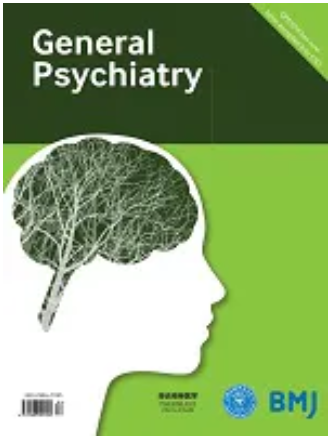经皮耳迷走神经刺激(taVNS)对注意过程的调节作用
IF 5.3
3区 医学
Q1 PSYCHIATRY
引用次数: 1
摘要
背景经皮耳迷走神经刺激(taVNS)对注意力的调节作用在以往的研究中存在差异。这种不一致可能是由于调制效应对不同注意功能的综合影响,包括警报、定向和执行控制。目的初步探讨taVNS对不同注意功能的调节作用。方法招募59名健康受试者,随机分为taVNS组(接受taVNS治疗20分钟)和对照组(接受taVNS治疗30秒)。所有参与者在taVNS/对照干预前后都进行了点探测任务。记录他们在测试前后的行为表现和脑电图信号,并提取和分析不同的观察变量,以表征不同的注意力系统。结果我们观察到,与对照组相比,应用于左耳的主动taVNS显著改善了整体行为表现,即右耳反应的反应时间(RT)缩短,个体内反应时间变异性(IIRTV)降低。此外,与对照组相比,活跃的taVNS导致与右手反应相关的P3和运动相关皮质电位(MRCP)振幅更大。有源taVNS还降低了C4电极自发高α带振荡功率谱密度的前后差异。重要的是,右手反应的平行中介模型表明,P3振幅的变化介导了taVNS对RT和IIRTV的影响。MRCP振幅的变化抑制了taVNS对IIRTV的影响。我们的研究结果为taVNS对不同注意系统的影响提供了行为学和脑学证据,它们之间的相互作用进一步塑造了行为表现,表明taVNS在认知增强中有很好的作用。如有合理要求,可提供资料。本文章由计算机程序翻译,如有差异,请以英文原文为准。
Modulatory effects of transcutaneous auricular vagus nerve stimulation (taVNS) on attentional processes
Background The modulatory effect of transcutaneous auricular vagus nerve stimulation (taVNS) on attention has varied in previous studies. This inconsistency might be attributed to the combined influence of the modulation effect on the different attentional functions, including alerting, orienting and executive control. Aims We aimed to preliminarily examine the modulatory effects of taVNS on different attentional functions. Methods Fifty-nine healthy participants were recruited and were randomly assigned to taVNS (receiving taVNS for 20 minutes) or control (receiving taVNS for 30 seconds) groups. All participants underwent a dot-probe task before and after the taVNS/control intervention. Their behavioural performance and electroencephalographic signals during pre- and post-tests were recorded, and different observed variables were extracted and analysed to characterise different attentional systems. Results We observed that active taVNS applied at the left ear significantly improved the overall behavioural performance, that is, shorter reaction time (RT) and lower intra-individual reaction time variability (IIRTV) for right-hand responses when compared with the control condition. In addition, active taVNS resulted in larger P3 and movement-related cortical potential (MRCP) amplitudes associated with right-hand reactions than the control condition. Active taVNS also decreased the difference between the pre- and post-tests in the power spectral density of spontaneous high-α band oscillations at C4 electrode. Importantly, parallel mediation models for right-hand responses showed that the change of P3 amplitude mediated the effects of taVNS on RT and IIRTV. In contrast, the change of MRCP amplitude suppressed the effect of taVNS on the IIRTV. Conclusions Our results provided behavioural and brain evidence supporting the effects of taVNS on different attentional systems, and their interaction further shaped behavioural performance, suggesting a promising role of taVNS in cognitive enhancement. Data are available upon reasonable request.
求助全文
通过发布文献求助,成功后即可免费获取论文全文。
去求助
来源期刊

General Psychiatry
医学-精神病学
CiteScore
21.90
自引率
2.50%
发文量
848
期刊介绍:
General Psychiatry (GPSYCH), an open-access journal established in 1959, has been a pioneer in disseminating leading psychiatry research. Addressing a global audience of psychiatrists and mental health professionals, the journal covers diverse topics and publishes original research, systematic reviews, meta-analyses, forums on topical issues, case reports, research methods in psychiatry, and a distinctive section on 'Biostatistics in Psychiatry'. The scope includes original articles on basic research, clinical research, community-based studies, and ecological studies, encompassing a broad spectrum of psychiatric interests.
 求助内容:
求助内容: 应助结果提醒方式:
应助结果提醒方式:


